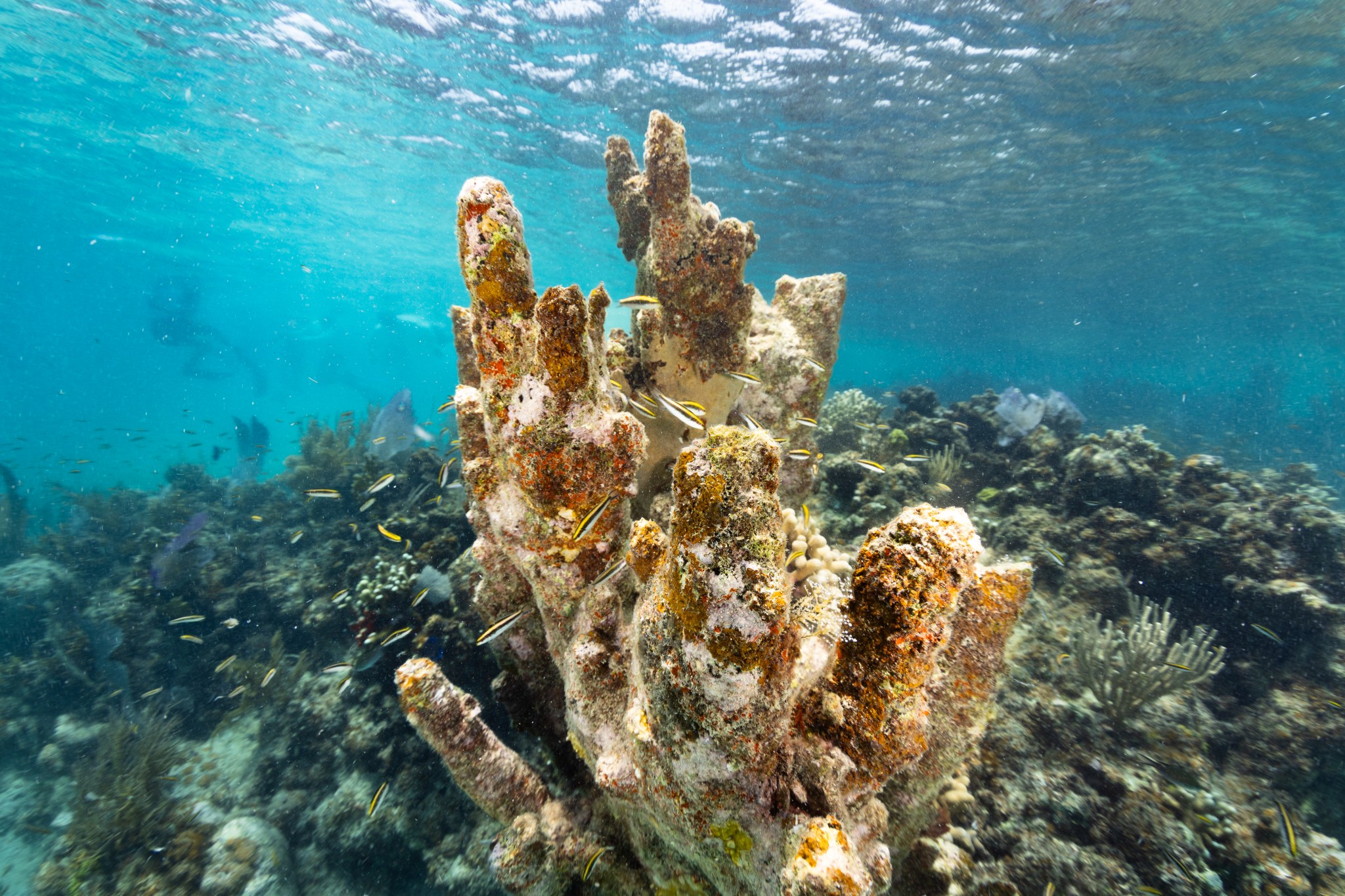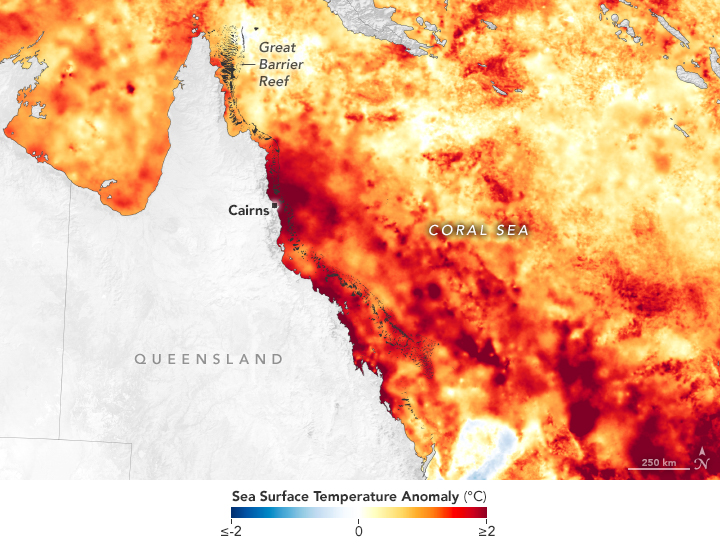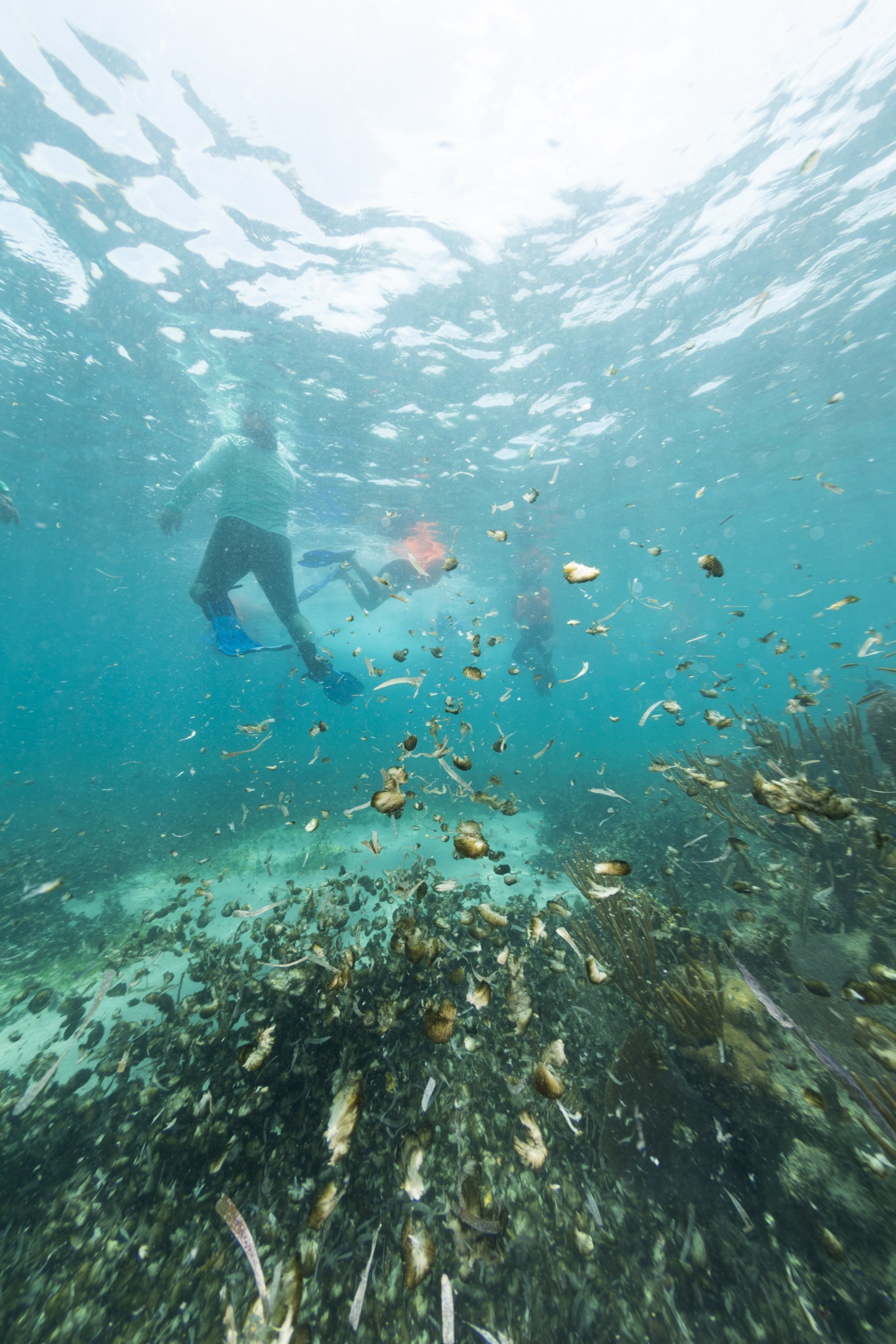7 min read

Coral reefs cover only 1% of the ocean floor, but support an estimated 25% of all marine life in the ocean, earning them the moniker 'rainforest of the sea.' They also play a critical role for coastal communities; preventing coastal erosion, protecting coastlines from hurricane damage, and generating $36 billion in annual income worldwide.
We asked Juan Torres-Pérez, a research scientist and coral reef expert at NASA Ames Research Center, about the science behind coral reefs, and the role they play in both marine ecosystems and human communities.
What is the difference between a reef, coral, and a coral reef?
Reef
Reefs are ridge-like structures, either natural or artificial. "A reef by definition is a structure that provides some relief above the ocean floor," Torres-Pérez said. "It could be something man-made: you can pile a bunch of car tires, and then they get colonized by different organisms. Or it could be natural: a small hill on top of the ocean floor in which the primary framework is a rock."
Corals
Corals are animals from the phylum Cnidaria, typically found along tropical coastlines. They comprise hundreds to thousands of living organisms called polyps, each only a few millimeters in diameter. Each polyp has its own body and a mouth with stinging tentacles to capture food such as plankton and small fish. The polyps grow together until they form a colony, and it is this colony that we recognize as a coral. There are two types of coral: hard corals and soft corals. Hard corals, also known as stony corals or more formally as Scleractinians, secrete calcium carbonate to form a hard skeleton; it is this type of coral that form a coral reefs. Soft corals, also known as Alcyonacea, are fleshy and bendable, often resembling trees or fans.

The colorful appearance of corals comes from the microscopic algae that live inside coral cells, called zooxanthellae. These algae perform photosynthesis, bringing vital food and nutrients to the corals. "The majority of the products from photosynthesis, about 80 to 90%, pass on to the coral, and then the coral uses those for its own metabolism," said Torres-Pérez. "This is why corals are usually found in shallow waters: because these organisms need the sunlight to photosynthesize."
Coral Reefs
A coral reef is a term used to describe the collective structure of hard corals that help shape a coral reef ecosystem. "A coral reef is a reef whose main structure is made by living organisms, in this case corals," said Torres-Pérez. "A coral reef will always be a reef, but not all reefs are coral reefs." The largest coral reef in the world is Australia's Great Barrier Reef, which is over 1,000 miles long and covers around 133,000 square miles.
Why are coral reefs important?
Healthy coral reefs play a crucial role in providing coastal protection, habitats for marine life, and even key ingredients for potential new medicines.
"Coral reef ecosystems provide habitat for thousands of species, from unicellular organisms like bacteria or some phytoplankton communities, to large organisms like sharks, groupers or snappers, and reptiles like sea turtles," Torres-Pérez said.
Corals act as a protective barrier during big storm events such as typhoons or hurricanes and have proven to be 97% effective in preventing damage to the natural and built environment. As coral reefs have been damaged in recent decades, coastal flooding and erosion have increased, causing significant damage to coastal communities.
Many communities depend on coral reefs as a resource to sustain their livelihoods. "These are critical ecosystems, not only in terms of the whole biodiversity of the planet but because they also provide sustenance for millions of people, especially in island nations," Torres-Pérez said. Coral reefs also support fisheries (fish caught for commercial, recreational, or subsistence purposes), recreational activities, and educational purposes.
Scientists have been exploring coral as a new ingredient source for some medicines. They have discovered that a chemical from coral can be extracted to create antibiotics that are effective against bacteria resistant to other types of antibiotics. These ingredients are replicated in a lab, eliminating the need to continuously harvest and harm corals.
What are some current threats to coral reefs?
According to a 2020 report produced by the Global Coral Reef Monitoring Network (GCRMN), 14% of the world's coral reefs have been lost since 2009. In the wake of the 2023-2024 global coral bleaching event, that number is expected to increase.

Coral bleaching is caused by increasing ocean temperatures. As water temperatures rise, it causes corals to expel their zooxanthellae, leaving behind a bone-white shell and depriving the coral of its main food source. "Eventually what happens is that the coral is too weak to compete with other organisms, like filamentous algae, that can overgrow the coral and eventually kill the whole colony," said Torres-Pérez.
Other threats to coral reefs come from human activity, such as pollution or physical damage. "Increases in sedimentation from poor land management get deposited into the reefs," said Torres-Pérez, citing urban stormwater runoff and deforestation as two examples of sedimentation. Coral sedimentation is the deposition and accumulation of sediments, like fine sands or mud, on a reef. This clouds the waters, blocking critical sunlight and reducing the ability of zooxanthellae to photosynthesize.
Another human-caused threat to corals is eutrophication, the unnatural increase of nutrients in the water. "Eutrophication provides grounds for the development of filamentous algae, which grows much faster than corals," said Torres-Pérez. Some of these excess nutrients in the water come from sewage released into coastal waters or runoff of agricultural fertilizers into the ocean. The algae feed off the excess nutrients and grow into massive blooms, which suppress the growth of corals.

Moreover, Torres-Pérez pointed out that human-caused physical damage to reefs can result from mechanical damage, such as ship anchors being thrown onto corals. Some fishing techniques, like deep water trawling (dragging fishing nets along the sea floor), can also damage reefs by pulling and tearing corals away from their bases. On a more individual scale, coral damage can also result from being stepped on by humans, or accumulated trash left behind by beach-goers.
What is being done to protect coral, at NASA and beyond?
Many coral reefs in the world are still unclassified, unexplored, or yet to be discovered. NASA's NeMO-Net






